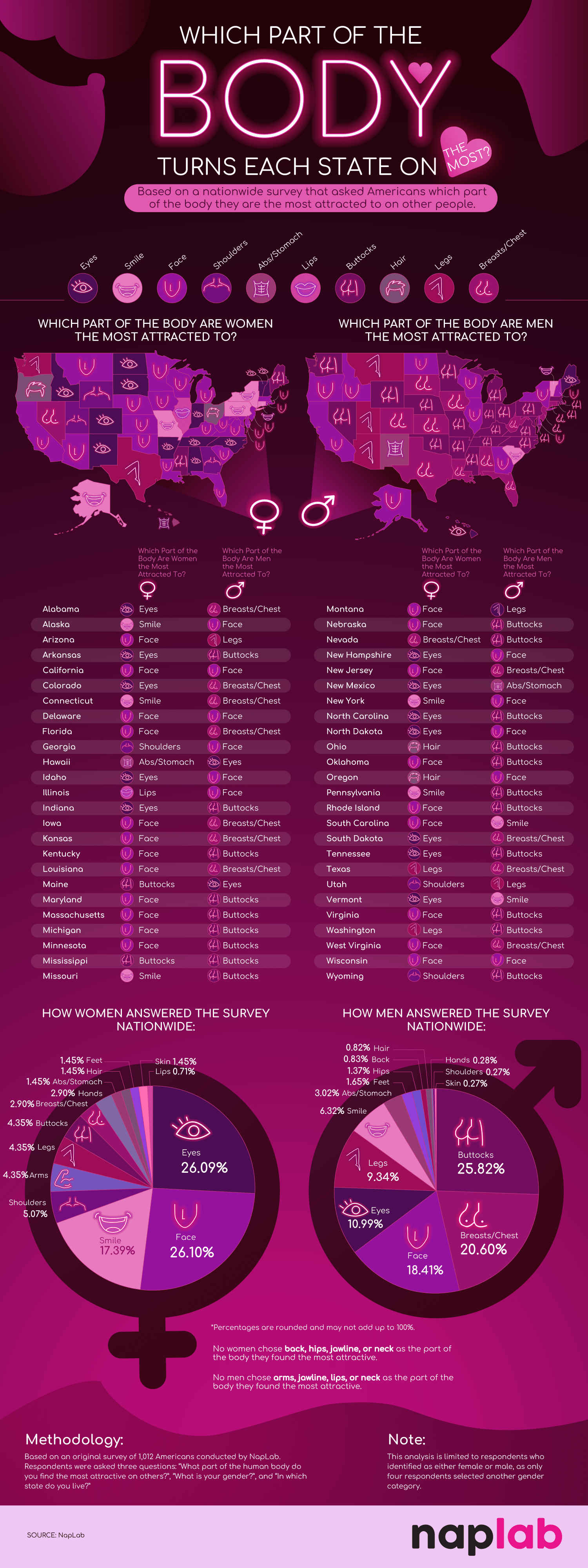Charts
New Map Displays the Geography of Desire
When dating apps connect people all around the world, sparking more long-distance relationships than ever, this prompts a fascinating question: does region affect what we find attractive? A new study from NapLab sheds some light on the answers, revealing that location does seem to affect what features Americans find most attractive.
Click below to zoom.
The survey had 1,012 participants across 50 states. Their approach was straightforward, asking participants three questions: which body part do you find most attractive on others, what is your gender, and what state do you live in? This method allowed the team to map out the results across America, showing us patterns based on location while challenging some of what we thought we knew about universal standards of beauty.
The research reinforced some of what we already know about what different genders find most attractive. For example, men are believed to be most drawn to features associated with fertility. This held true in the NapLab study, showing that 25.82% of men are most attracted to buttocks and 20.60% are most attracted to breasts.
Women are thought to be drawn to more emotional aspects of a relationship, which holds true in what they’re attracted to. The study showed women being most drawn to expressive features, with 26.10% saying they find the face most attractive, 26.09% favoring eyes, and 17.39% answering smile.
This research helps show how factors beyond biology could influence attraction. Climate might play a role, as we can see from Hawaii’s results. Its tropical climate and plentiful beaches mean more skin exposed and a bigger emphasis on physical fitness. Hawaii was the only state in which women found abs most attractive. In some of the rural states, men were predominantly attracted to buttocks. On the opposite end of the spectrum, more conservative states seemed more hesitant to express sexual attraction, stating that they found smiles and eyes most attractive. This indicates that religious background and other cultural norms can affect what people are attracted to or what they admit feeling attracted to.
Despite these variations, there were things that Americans had in common across the nation. Almost no respondents said they were most attracted to skin, feet, or hands. Neck and jawline received zero votes. It seems there are some biologically driven constants that geography doesn’t change.
This research shows that there is no universal agreement on what features are most attractive. There’s already been plenty of scientific research on what we’re biologically attracted to and why, but this study shows other factors might be in play. While some of our feelings are driven by biological impulses, it’s clear that culture, climate, and other regional factors change what we’re attracted to. This is a fun study for couples to discuss together, as well as giving armchair sociologists some food for thought. Find many more intriguing insights in the details of this map!
